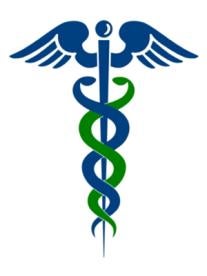Roughly 60 percent of hospitals nationwide either have received or are seeking tax-exempt status under the United States Treasury Department (Treasury) and Internal Revenue Service (IRS) rules and regulations. With new final rules and regulations adopted by the Treasury and the IRS effective December 29, 2014, nonprofit hospitals (referred to in the Federal Register as “charitable hospitals”) now face a number of additional requirements when attempting to collect debts owed for care provided to patients and face additional mandates related to financial assistance policies and qualification of certain low-income patients for financial assistance.
The final rules and regulations clarify the broad provisions of the Patient Protection and Affordable Care Act of 2010 (PPACA), which added Section 501(r) to the Internal Revenue Code (Code) imposing the following four additional requirements on charitable hospitals to maintain tax-exempt status:
-
Conduct a community health needs assessment (CHN Assessment) at least once every three years and adopt an implementation strategy to meet those community health
needs, or be subject to a $50,000 tax penalty. -
Establish a written financial assistance policy which prescribes the eligibility criteria for assistance, how patients apply for assistance, and how they are charged for care under the
policy, and a written emergency medical care policy requiring emergency care to individuals regardless of their eligibility for financial assistance. -
Limit the use of gross charges and the amounts charged to those patients who qualify for financial assistance for emergency or other medically necessary care to not more than the amounts generally billed to individuals who have insurance covering such cases.
-
Make reasonable efforts to determine whether an individual is eligible for assistance under the financial assistance policy before engaging in extraordinary collection actions (EC Actions).
Additionally, the PPACA insists that a charitable hospital organization meet each of the above requirements separately with respect to each facility it operates.
Below are some requirements from the new rules and regulations that may be potential areas of focus for regulators in their review and enforcement actions against charitable hospitals.
-
-
The CHN Assessment process requires careful documentation of each of the multiple levels of need assessment, community input and collaboration, and a hospital’s plan for addressing the need with an adopted strategy for implementation.
-
A hospital’s financial assistance policy must contain all eligibility criteria, all financial assistance and discounts available under the policy, and methods to apply for financial assistance, as well as any actions that may be taken in the event of nonpayment under certain circumstances.
-
Hospitals must continue to take certain measures to make the financial assistance policy, the policy’s application form and a plain language summary of the policy available upon request, available in certain areas of the hospital for visitors and patients (e.g. emergency department and hospital intake areas), available on a website, and available to members of the community served.
-
Certain additional written notices with financial assistance policy information, summaries and hospital contact information for policy-related documents must be provided to patients against whom a hospital actually intends to engage in EC Action.
-
Hospitals must limit the costs for any care for which financial assistance policy-eligible individuals will be personally responsible to not more than amounts generally billed (AGB), and the criteria and method for calculating the AGB must be clearly defined by a hospital in its financial assistance policy.
-
Reasonable efforts, as defined in the new regulations, must be followed and carefully documented by hospitals during each step of an EC Action assessment application, including notification and further billing and collection communication(s) with financial assistance policy-eligible individuals. The regulations define EC Action as including, among other things, reporting adverse information about the individual to credit bureaus; requiring or deferring medically necessary care because of nonpayment of bills for previously provided care; and instituting legal process such as liens, foreclosure, attachment of property, or garnishing wages.
-
The full Treasury and IRS rules and regulations related to the additional requirements on charitable hospitals contain specific regulatory changes and other nuances not touched on in the “big picture” points mentioned above. The full text of the new regulations can be found at: http://www.gpo.gov/fdsys/pkg/FR-2014-12-31/pdf/2014-30525.pdf.
Charitable hospitals may lawfully bill for and collect funds they are owed for patient care. However, the new rules and regulations in this area mean hospital leadership and experienced legal counsel should closely review all related policies, procedures, and facility practices to ensure all billing and collection policies and practices fully comply with the law.



 />i
/>i
